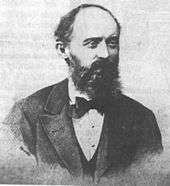József Angster

József Angster (July 7, 1834 – June 9, 1918) was a Hungarian organ making master and founder of the Angster dynasty, one of Central Europe's most sought after in the craft, an important figure in Hungarian applied arts history.
Origins
Angster was born at Kácsfalu, in present-day Croatia into a German family who had travelled to Hungary from Austria in the 1790s. He wrote his memoirs in German, they were translated in his old age into Hungarian, he later said that in speaking Hungarian he was a beginner, and in writing it he was an unschooled senior.
Studies
He studied cabinet making then travelled to Timișoara and worked in Germany. He studied organ manufacturing in Vienna at the Titz factory and from 1863 to 1866 worked in Paris under Aristide Cavaillé-Coll where he also worked on the organs of Cologny castle, Notre Dame and Sainte-Trinité. He returned home on foot although he was asked to stay and work abroad. He was a deeply religious man and was made member of the Order of St. Gregory the Great by the Pope and was also president of the old boy's club in Pecs until his death.
Life and work
His first domestic commission was for the new Pecs synagogue and he founded a workshop in that city in 1869. In the following decades he received numerous commissions in Hungary and surrounding countries, including Italy. His domestic works include:
- Kalocsa Cathedral.
- Pécs, Inner city R.C. church.
- Budapest, Terézváros (Budapest) R.C. church.
- Pécs Cathedral, built in 1880, it was the 100th organ built by Angster.
- Budapest, Kálvin squ. Reformed church
- Debrecen, Kossuth str. Reformed church
- Győr Cathedral
Legacy
His legacy is the instruments he built. His name is attached to a Technical college in Pécs, where he died, as well as one street in the city. After his death, the organ factory's business was run by Emil and Oskar Angster after 1903 and from 1940 to 1949 by Jozsef Angster, who had been born in 1917. He and his nephew, Imre Angster established a second factory at Rakospalota and introduced some technical innovations. The communist takeover resulted in the factory being closed as far as organ manufacturing was concerned. However, since 1992 a new workshop was set up in Pecs with backing by Jozsef Angster.
Written works
- The history and workings of the organ, (Pecs, 1886)
Literature
- Jozsef Angster (the younger): Angster - a book about the Pecs workshop and family history, Pannonia books, 1993.
- Jozsef Angster obituary, Musical journal/Zenei Szemle, 1918 no. 5